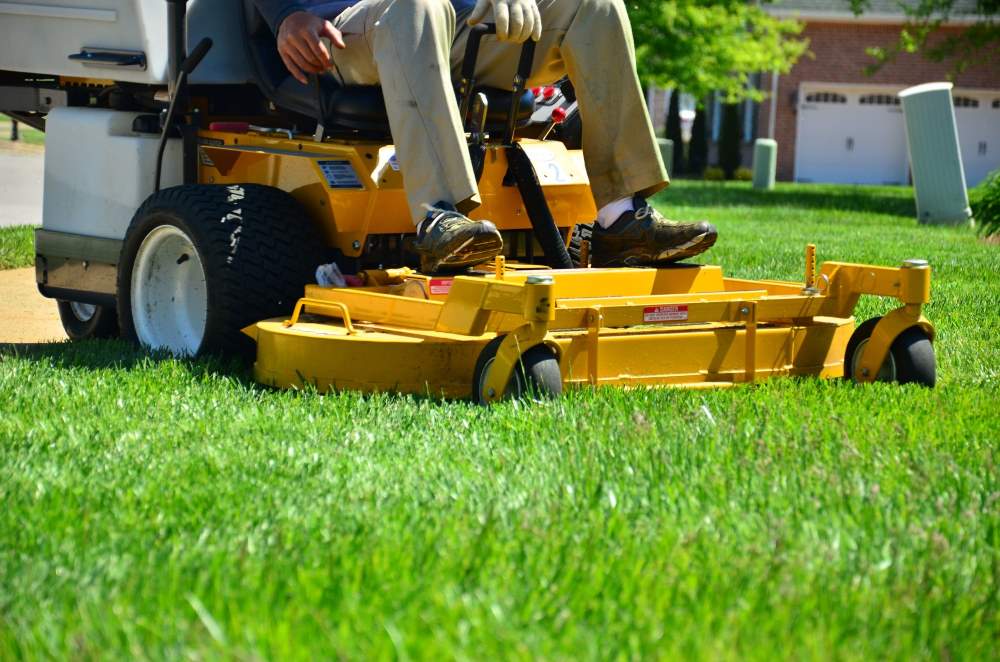
How Saltwater Can Damage Your Lawn & How to Fix It
Jamie TedderSaltwater can travel to your lawn in various ways: flooding from storm surges, high tides, or through pool overflows. As a homeowner, the last thing you want to worry about after a storm is your yard, but salt damage to grass can be long-lasting if not addressed.
While the damage may not always be immediately visible, the long-term effects of salt on your lawn can be devastating, leading to stunted growth, discoloration, and even the death of your grass. This article will help you understand the effects of saltwater on grass, how to identify saltwater damage, and how to reclaim your yard from the harmful effects of salt with salt-tolerant grass varieties like the new Durban Seashore Paspalum.
Will Saltwater Kill Grass?
Saltwater can be harmful to vegetation, including grass. It interferes with the plant's ability to absorb the essential nutrients necessary for growth. When saltwater comes in contact with grass, the high salt concentration in the water draws moisture away from the roots, causing dehydration. Without sufficient water and nutrients, grass struggles to thrive, leading to discoloration, stunted growth, and, in severe cases, dead patches.
Salt Damage to Lawn
While saltwater can kill grass, it typically takes prolonged exposure for significant damage to occur. A sudden storm surge or a spill from a pool may not result in immediate death, but without proper action, the long-term effects can still harm your yard.
In addition to harming the grass itself, saltwater can alter the structure of the soil, making it harder for grass to absorb water. Over time, the soil can become so saturated with salt that it turns toxic, killing off beneficial microorganisms and creating an inhospitable environment for plant life.
Salt Damage to Soil
Another critical issue is that not only does saltwater damage the grass, but it can also harm the surrounding soil. While soil damage may not be as visually obvious as the damage to the grass, it creates a toxic environment for plants. Salt displaces essential nutrients in the soil, preventing grass from accessing them and worsening the overall problem.

How Salt Concentration Influences Damage to Lawn
When we discuss the impact of salt water on grass, it's important to emphasize the concentration of salt. While freshwater typically contains 0.5 to 1.0 grams of salt per liter, seawater has about 35 grams of salt per liter. For grass to be harmed significantly by freshwater, it would require a large quantity, but saltwater poses a much greater risk.
Interestingly, pools with saltwater systems are usually less harmful to grass than storm surges or ocean flooding. When maintained correctly, saltwater pools are often diluted by rainwater and contain other chemicals, like chlorine, which help balance the salt. Only a small portion of the total pool volume is pure saltwater, so it is unlikely to harm your grass unless the salt concentration is extremely high.
The real concern lies in the salt concentrations resulting from a storm surge or the contamination of freshwater sources used for irrigation. If you live in a coastal area, monitor the amount of salt in the soil and take action to remedy any issues before they worsen.
Signs of Saltwater Damage on Grass
You will probably not see immediate signs of damage from saltwater, but your grass may display the following symptoms:
Slow Growth: A significant slowdown in grass growth is one of the first signs of saltwater damage. As the salt accumulates in the soil, it disrupts the grass’s ability to absorb nutrients, leading to stunted growth.
Color Change: Grass may turn a darker shade of green, blue-green, or yellow, signaling it’s struggling to survive. The osmotic effect caused by the salt makes it difficult for grass to take in water, leading to dehydration and discoloration.
Wilting: Grass that has been exposed to salt may wilt, even if the soil is moist. This occurs because the grass roots can no longer absorb enough water to stay hydrated.
Thinning and Tip Burn: At higher salt levels, grass may begin to thin out, and the tips of the leaves will brown and burn.
These signs can be subtle at first but should not be ignored. Over time, salt damage can spread and become a long-term issue for your lawn, leading to patches of dead or struggling grass.

Recovering Saltwater-Damaged Grass
If saltwater has affected your lawn, you can take steps to reclaim it and restore it to a healthy state.
Step 1: Assess the Damage
The first step in reclaiming a lawn affected by saltwater is to evaluate the extent of the damage. Although optional, conducting a soil test can provide valuable insight into the concentration of salts in the soil, helping you determine the best course of action for recovery. Look for signs of salt stress, such as discoloration, stunted growth, or bare patches, to gauge the severity of the problem.
Step 2: Remove Debris and Clear the Area
Start by clearing any debris, sand, or mud that has accumulated on the grass. Excess debris can block sunlight, preventing photosynthesis and further stressing the lawn. Use a rake or a flat-headed shovel to remove the debris manually. Once the area is cleared, thoroughly rinse the grass with fresh water to help wash away surface salt.
Step 3: Flush the Soil with Fresh Water
Frequent flushing with fresh water is essential to leach excess salts from the root zone. This is particularly important in areas with poorly drained soils, such as clay, where salt retention is higher.
To reduce salt buildup, apply at least 6 inches of fresh water over time to flush out 50-70% of the sodium from the soil. This can be achieved through natural rainfall or consistent irrigation.
Step 4: Improve Drainage and Aerate Clay Soils
Proper drainage is essential to prevent standing water, especially in compacted or clay-heavy soils. Core aeration can help improve water penetration by creating small holes in the soil, allowing water to seep into the soil more effectively and improving overall drainage. This process helps flush out accumulated salts from the root zone while reducing the risk of salt buildup. Additionally, incorporating organic matter, such as compost, can further aid soil recovery by improving structure and promoting beneficial microbial activity.
Preventing Damage from Saltwater
While restoring a salt-damaged lawn is possible, taking proactive steps can help protect your grass and soil from long-term damage. Here are a few effective strategies to minimize salt exposure and maintain a healthy lawn.
Use Fresh Water: If you’re concerned about saltwater intrusion, use fresh water to irrigate your lawn and flush the salts from the soil. This will prevent the salts from accumulating and damaging your grass.
Avoid Saltwater on Your Lawn: If you live in a coastal area or have a saltwater pool, be mindful of using saltwater on your lawn. If a surge or spill does occur, make sure to flush the area with fresh water immediately.
Use Salt-Tolerant Grass: Certain grass species are more tolerant to saltwater. Consider using salt-tolerant grass varieties like Seashore Paspalum, Zoysiagrass, Bermudagrass, or St. Augustine grass. These types of grass can handle higher salt concentrations and are better suited for coastal areas.

Using Salt-Tolerant Warm-Season Grass in Florida
Choosing a salt-tolerant grass can significantly improve your lawn’s resilience, especially in coastal areas like Florida, where saltwater intrusion from storms, high tides, or irrigation with brackish water is a concern. These grasses are better equipped to withstand salt exposure, reducing the risk of damage and helping your lawn stay lush and healthy despite challenging conditions.
Durban Seashore Paspalum is one of the best options for salt-prone areas, a new variety known for its exceptional salt tolerance. Originating from the shores of South Africa, this grass is a groundbreaking grass cultivar bred for superior performance in coastal environments. Collected from Durban Country Club, Africa’s only Top 100 golf course, this variety was developed to excel in salt resistance, drought tolerance, and color retention under low inputs.
Available as sod grass for sale at Bethel Farms, this grass offers a durable, dense turf that thrives in coastal conditions. Another salt-tolerant option is Bimini Bermuda, providing good resistance to salt damage while maintaining strong growth.
Get Salt-Tolerant Sod for Your Lawn
Saltwater damage to grass can be a serious concern, especially for those living near the coast or those with saltwater pools. Understanding how salt affects soil and grass, identifying signs of damage, and taking proper action to reclaim your yard are key steps in maintaining a healthy, beautiful lawn. With proper care, the right grass varieties, and a focus on soil management, you can prevent saltwater from ruining your yard and keep your grass growing strong and healthy.
Sod is an excellent option for reclaiming areas where saltwater has caused damage. Unlike seeds, which can struggle to germinate in salty conditions, sod provides an established root system that is more resilient to salt. Using sod can speed up the process of recovery and help your lawn thrive after saltwater damage.
If you're looking for high-quality, salt-tolerant sod options, Bethel Farms has you covered. Visit our website today to explore our selection and find the perfect grass for your lawn!

